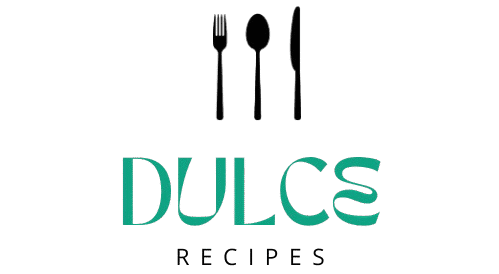A warm, melty egg and cheese sandwich frozen to perfection can be the ultimate breakfast time-saver. Imagine waking up, grabbing a pre-made sandwich from the freezer, and enjoying a hot, delicious meal in just minutes—without any of the morning prep!
But here’s the catch: Not all frozen sandwiches turn out great. Some become soggy, others dry, and a few end up tasting bland. That’s why knowing the right way to freeze, store, and reheat your sandwich is essential. In this guide, you’ll learn the best techniques to keep your breakfast sandwiches tasting fresh, plus expert tips to avoid common mistakes.
Whether you’re meal prepping for the week or making a big batch for the entire month, this guide ensures that your egg and cheese sandwich frozen stay just as tasty as the day you made them.
Table of Contents
Discover more delicious recipes and ideas by visiting our homepage!
Why Freeze egg and cheese sandwich frozen?
If you’ve ever found yourself skipping breakfast because you’re too busy, freezing sandwiches can be a game changer. Here’s why:
✅ Saves Time: Prepping a batch of sandwiches means breakfast is ready in seconds.
✅ Budget-Friendly: Homemade frozen sandwiches cost far less than store-bought options.
✅ Healthier Choice: You control the ingredients—no preservatives or artificial flavors.
✅ Minimizes Food Waste: Use up extra bread, cheese, and eggs before they go bad.
Unlike store-bought frozen breakfasts, homemade egg and cheese sandwich frozen properly taste fresher and more flavorful. Plus, you can customize them with your favorite bread, cheese, and add-ins!
How to Properly Freeze egg and cheese sandwich frozen
Best Ingredients for Freezer-Friendly Breakfast Sandwiches

Not all ingredients handle freezing well. Choosing the right ones will prevent texture changes and keep your sandwiches from becoming mushy or dry.
Best Choices for Freezing
- Eggs: Scrambled, baked, or fried with firm yolks work best. Avoid runny yolks, as they don’t reheat well.
- Cheese: Hard cheeses like cheddar, Swiss, gouda, or provolone melt beautifully after freezing. Soft cheeses like feta or fresh mozzarella may become grainy.
- Bread: English muffins, bagels, croissants, and sturdy sandwich bread freeze well. Avoid soft white bread, which can turn soggy.
- Protein (Optional): Fully cooked bacon, sausage patties, or ham slices hold up well in the freezer.
Ingredients to Avoid
❌ Watery veggies (lettuce, tomato, cucumbers) – They become mushy when thawed.
❌ Mayonnaise-based spreads – These tend to separate and create an odd texture.
❌ Overly crispy bacon – It becomes brittle when frozen. Instead, slightly undercook it so it crisps up when reheated.
Step-by-Step Guide to Freezing egg and cheese sandwich frozen

1. Cooking the Eggs and Assembling the Sandwiches
- Baked Eggs: Pour whisked eggs into a muffin tin and bake at 350°F (175°C) for 12-15 minutes. This creates uniform egg rounds that fit perfectly on a sandwich.
- Scrambled Eggs: Cook on medium heat, stirring occasionally. Slightly undercook them, as they will continue cooking when reheated.
- Fried Eggs: Cook with a firm yolk to avoid messiness when thawing.
Once the eggs are cooked and cooled, assemble each sandwich by layering egg and cheese onto lightly toasted bread. If adding meat, place it between the egg and cheese to act as a moisture barrier.
2. Wrapping for Maximum Freshness
Proper wrapping prevents freezer burn and helps maintain the sandwich’s texture. Here’s the best method:
✅ Wrap each sandwich in parchment paper to absorb moisture.
✅ Cover it with aluminum foil to lock in freshness.
✅ Store in a freezer-safe bag with all air removed.
Label each sandwich with the freezing date so you can use them within 3 months for the best quality.
How to Reheat a Frozen egg and cheese sandwich frozen

Best Methods for Reheating Frozen Breakfast Sandwiches
A frozen sandwich is only good if it reheats properly. The goal is to warm the egg, melt the cheese, and crisp the bread—without making it soggy or dry.
1. Microwave (Fastest Option)
- Remove foil and wrap the sandwich in a damp paper towel.
- Microwave on 50% power for 1 minute to thaw.
- Flip and microwave on high for 30-45 seconds until heated through.
✅ Best for: Quick breakfasts on busy mornings
❌ Downside: Bread may turn slightly chewy
2. Oven or Toaster Oven (Best Texture)
- Preheat to 350°F (175°C).
- Place sandwich directly on the rack or a baking sheet.
- Heat for 10-15 minutes, flipping once.
✅ Best for: Crispy, fresh-tasting sandwiches
❌ Downside: Takes longer than a microwave
3. Air Fryer (Crispiest Option)
- Preheat air fryer to 350°F (175°C).
- Place sandwich in the basket and cook for 7-10 minutes.
✅ Best for: Crispy bread with melted cheese
❌ Downside: Requires an air fryer
What is the Best Way to Cook a Frozen Breakfast Sandwich?
Cooking from Scratch for Freezing
If you’re making sandwiches specifically for freezing, follow these extra tips:
- Undercook eggs slightly, as they will continue cooking when reheated.
- Toast bread lightly before assembling to prevent sogginess.
- Layer ingredients correctly: Bread → Cheese → Egg → Meat (if using) → Bread.
💡 Pro Tip: Add an extra slice of cheese between the egg and bread to act as a moisture barrier and prevent sogginess!
How to Keep a Frozen Sandwich Tasting Fresh
To make your sandwich taste like it was made fresh:
- Toast the bread before eating for extra crispiness.
- Add fresh toppings like avocado or tomato after reheating.
- Use flavorful sauces to enhance taste—check out this guide to the best sauce for egg sandwiches for ideas!
FAQs: Answering Common Questions About Freezing egg and cheese sandwich frozen
Can You Freeze egg and cheese sandwich frozen?
Yes! egg and cheese sandwich frozen correctly stay fresh for up to 3 months. Follow the steps above to keep them from becoming soggy or dry.
How to Reheat a Frozen Breakfast Sandwich?
Microwave for speed, oven for crispiness, or air fryer for the best balance of texture and flavor.
🌟 Want more freezer-friendly breakfast ideas? Check out this guide to freezer-friendly bagel breakfast sandwiches!
Common Mistakes to Avoid When Freezing Sandwiches

Freezing sandwiches may seem simple, but small mistakes can ruin the texture and taste. Avoid these common errors to ensure your egg and cheese sandwich frozen stays fresh and delicious.
1. Using the Wrong Bread
Some bread types become soggy or too chewy after freezing and reheating. Soft white bread absorbs moisture quickly, leading to a mushy texture. Instead, opt for English muffins, bagels, or ciabatta, which hold up well in the freezer.
2. Not Toasting the Bread First
If you skip pre-toasting, the bread may become overly soft or gummy when reheated. Lightly toast your bread before assembling the sandwich. This extra step helps maintain the texture.
3. Wrapping Sandwiches Incorrectly
Poor wrapping leads to freezer burn, which causes dry, tasteless food. The best method is to wrap the sandwich in parchment paper first, then cover it tightly with aluminum foil or place it in an airtight freezer bag.
4. Forgetting to Label the Sandwiches
Frozen sandwiches can look alike. If you don’t label them, you might end up eating an old sandwich instead of a fresh one. Always write the date and sandwich type on the packaging.
Pro Tips & Variations for the Best Frozen Sandwiches
How to Elevate Your Frozen Breakfast Sandwich
Even though egg and cheese sandwich frozen taste great as they are, adding extra ingredients after reheating can make them even better.
- Fresh Veggies – Add sliced avocado, tomato, or spinach after reheating for freshness.
- Sauces & Spreads – A touch of hot sauce, garlic aioli, or homemade sandwich sauce can enhance the flavor. Try these tasty ideas from this guide to the best sauces for egg sandwiches.
- Extra Protein – Add turkey, ham, or plant-based alternatives for a heartier sandwich.
Creative Sandwich Variations to Try
- Bagel Breakfast Sandwich – Swap bread for a bagel and use cream cheese instead of sliced cheese.
- Croissant Egg & Cheese – A buttery croissant makes a flaky, rich sandwich when frozen and reheated correctly.
- Spicy Jalapeño Cheddar – Add pickled jalapeños and spicy cheddar for an extra kick.
- High-Protein Version – Double the eggs and add turkey bacon for a protein boost.
How Long Can You Freeze egg and cheese sandwich frozen?
Properly wrapped egg and cheese sandwich frozen can last up to 3 months in the freezer. Beyond this, they are still safe to eat but may start to lose flavor and texture.
To maximize freshness:
- Keep sandwiches in an airtight container to prevent moisture loss.
- Store them in the coldest part of the freezer, away from the door.
- Label each sandwich with the freezing date for easy tracking.
After 3 months, the sandwich may develop ice crystals, making the bread slightly stale. If this happens, consider toasting the bread separately before reassembling.
FAQs: Answering Common Questions About Freezing egg and cheese sandwich frozen
Can You Freeze egg and cheese sandwich frozen?
Yes! Freezing egg and cheese sandwich frozen is a great way to meal prep. Proper wrapping and storage ensure they stay fresh for up to 3 months without losing flavor.
How to Reheat a Frozen Breakfast Sandwich?
The best method depends on your preference:
- Microwave – Fastest option, but may make the bread soft.
- Oven/Toaster Oven – Keeps bread crispy and evenly heats the sandwich.
- Air Fryer – Best for maintaining a crispy texture.
What is the Best Way to Cook a Frozen Breakfast Sandwich?
If cooking from frozen, wrap the sandwich in foil and bake at 350°F for 15 minutes. For a crispier texture, remove the foil for the last 5 minutes.
Are Sandwich Brothers Still in Business?
Yes, Sandwich Brothers, a well-known frozen breakfast brand, continues to operate. If you prefer homemade versions, they are often healthier and customizable to your taste.
What Sandwich Ingredient Should Not Be Frozen?
Avoid ingredients that release excess water or change texture, such as:
❌ Lettuce – Becomes wilted and slimy.
❌ Fresh tomato slices – Turn mushy when thawed.
❌ Mayonnaise – Separates and becomes unappetizing.
Can You Freeze Eggs and Cheese?
Yes! Both eggs and cheese freeze well. However, scrambled or baked eggs hold up better than runny yolks. Hard cheeses like cheddar or Swiss also retain their texture after freezing.
PrintFreezer-Friendly Egg and Cheese Breakfast Sandwich
- Total Time: 25 minutes
- Yield: 6 sandwiches 1x
Description
A warm, melty egg and cheese breakfast sandwich that’s perfect for meal prep! This freezer-friendly breakfast option is easy to make, saves time on busy mornings, and tastes just as fresh as the day you made it. Whether you prefer English muffins, bagels, or croissants, these sandwiches reheat perfectly in the microwave, oven, or air fryer.
Ingredients
For the Sandwiches:
- 6 large eggs
- 6 English muffins (or bagels/croissants)
- 6 slices cheddar cheese (or Swiss, gouda, provolone)
- 6 sausage patties, bacon strips, or ham slices (optional)
- 2 tbsp butter (for toasting the bread)
- Salt and pepper, to taste
Optional Add-Ins:
- 1 tsp hot sauce or sriracha (for spice lovers)
- ½ tsp garlic powder (for extra flavor)
- ½ cup spinach or arugula (add after reheating)
Instructions
1. Cook the Eggs:
- Oven-Baked Method: Preheat oven to 350°F (175°C). Grease a muffin tin and pour whisked eggs into each section. Bake for 12-15 minutes until set.
- Scrambled Method: Cook eggs over medium heat, stirring occasionally. Slightly under-cook them, as they will continue cooking when reheated.
- Fried Egg Method: Fry eggs in a pan, keeping the yolks firm for mess-free reheating.
2. Toast the Bread:
- Lightly toast English muffins (or bagels/croissants) with butter in a skillet. This step prevents sogginess when reheated.
3. Assemble the Sandwiches:
- Place cheese on the bottom half of each bread.
- Add the egg patty on top of the cheese.
- Add cooked sausage, bacon, or ham (if using).
- Cover with the top half of the bread.
4. Wrap for Freezing:
- Wrap each sandwich in parchment paper (to absorb moisture).
- Cover with aluminum foil for extra protection.
- Place in a freezer-safe bag, removing as much air as possible.
- Label with the date and store for up to 3 months.
How to Reheat a Frozen Breakfast Sandwich:
1. Microwave (Fastest Option)
- Remove foil, wrap in a damp paper towel.
- Microwave on 50% power for 1 minute to thaw.
- Flip and microwave on high for 30-45 seconds until heated through.
2. Oven or Toaster Oven (Best Texture)
- Preheat to 350°F (175°C).
- Place sandwich on a baking sheet.
- Heat for 10-15 minutes, flipping once.
3. Air Fryer (Crispiest Option)
- Preheat air fryer to 350°F (175°C).
- Place sandwich inside and cook for 7-10 minutes.
Notes
- To prevent sogginess: Always toast bread lightly before assembling.
- Customize it: Add avocado, tomato, or fresh greens after reheating for extra freshness.
- Gluten-Free Option: Use gluten-free English muffins or wraps.
- Storage Tip: Keep sandwiches in the coldest part of the freezer to maintain texture and flavor.
Enjoy a quick, homemade breakfast every morning with these freezer-friendly egg and cheese sandwiches! 🥪✨
- Prep Time: 10 minutes
- Cook Time: 15 minutes
- Category: Breakfast
- Cuisine: American
Nutrition
- Serving Size: 1 sandwich
- Calories: ~320 kcal
- Fat: 18g
- Carbohydrates: 28g
- Protein: 17g
Conclusion
Freezing egg and cheese sandwich frozen is an easy way to save time while ensuring a delicious, homemade breakfast anytime. By using the right ingredients, proper wrapping methods, and correct reheating techniques, you can enjoy a fresh-tasting sandwich even weeks later.
Start meal prepping today, and experiment with different flavors, breads, and toppings to create your perfect frozen breakfast sandwich!






1 thought on “The Ultimate Guide to Freezing egg and cheese sandwich frozen”